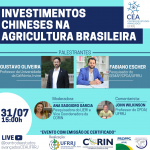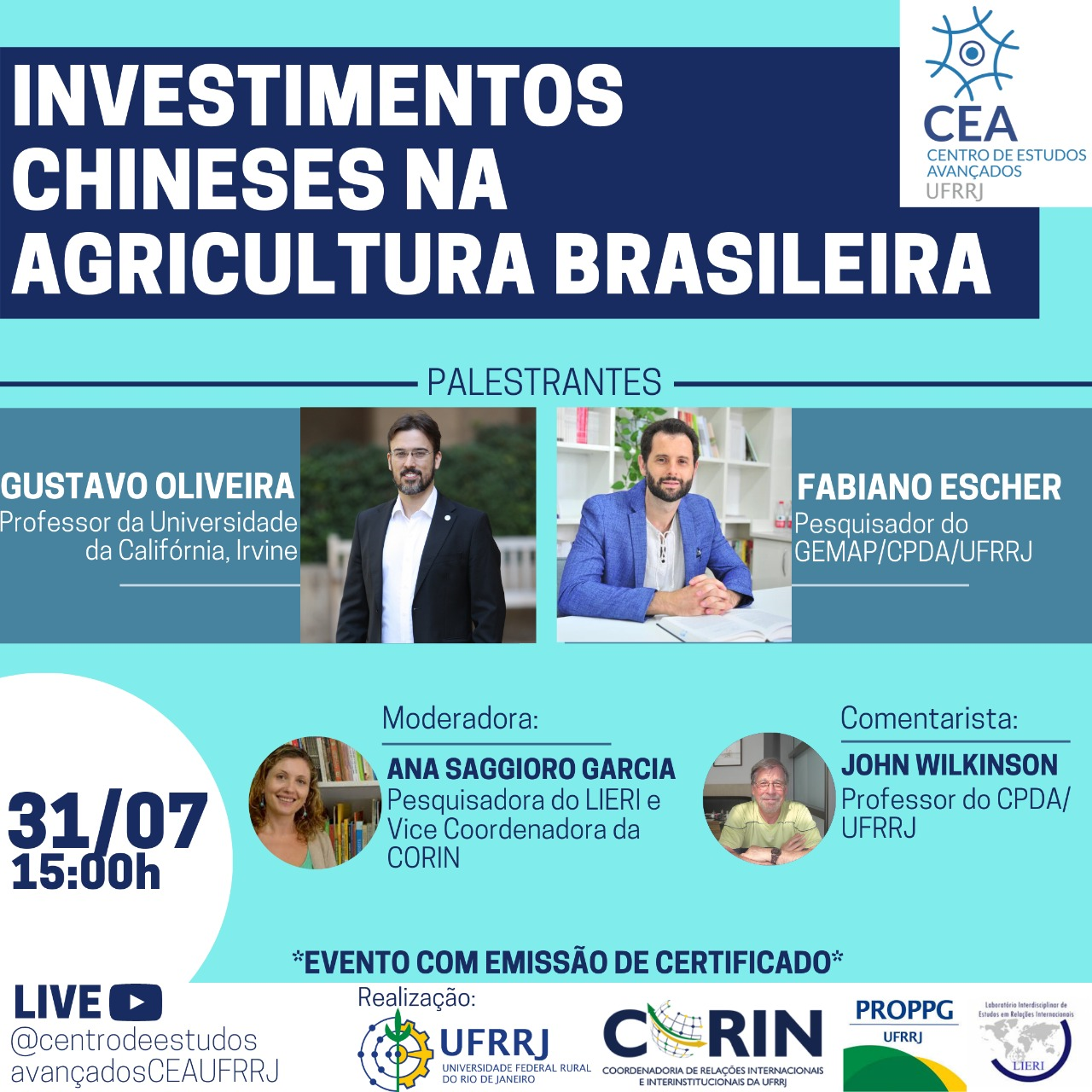Dr. Oliveira presents his research at the Federal Rural University of Rio de Janeiro (Brazil)
Dr. Oliveira interviewed by the South China Morning Post
China urged to diversify soybean sources to curb reliance on US
Jun Mai, South China Morning Post, May 22, 2020
(…)
Li’s proposal [that China should diversity soy imports from the US and Brazil] would also be difficult to implement because of China’s industrialisation and concentration of livestock production, according to Gustavo Oliveira, an assistant professor with the University of California, Irvine, who tracks global soybean production.
“The main difficulty faced by China is about the continued industrialisation and concentration of livestock production, which guarantees that demand for soy-based livestock feed outpaces China’s capacity for domestic production and procurement from countries besides Brazil and the US,” he said.
For the full report, see: https://www.scmp.com/news/china/diplomacy/article/3085579/china-urged-diversify-soybean-sources-curb-over-reliance-us
Dr. Oliveira published in the Routledge Handbook of Critical Resource Geography
Soy, Domestication, and Colonialism
Dr. Oliveira’s chapter “Soy, Domestication, and Colonialism” has just been accepted for publication in the Routledge Handbook of Critical Resource Geography, edited by Matthew Himley, Elizabeth Havice, and Gabriela Valdivia. The edited volume is forthcoming from Routledge.
Abstract
Soy is one of the world’s most important crops by area, volume, and value. It is especially distinctive for serving as key nexus between food, livestock feed, fuel, and myriad industrial products. Its rapidly multiplying uses provide a powerful touchstone for analysis of how resources are not only created, but also constantly recreated and redesigned. In turn, these transformations reflect the shifting political ecological foundations that undergird resource creation – above all the territorial expansion of an extractive mode of production intimately associated with colonialism – and illustrate how resource-making processes generate new socio-ecological relations in their own image. This chapter begins with the historical interdependence of agriculture and colonialism, framing the domestication of plants as the archetype of resource-making. It then traces the cultivation of soybeans from its domestication and dispersal throughout present-day China through Han colonial expansion; through its early industrialization at the hands of Japanese colonizers of Korea and “Manchuria,” followed by US industrialists; to its key role in the contemporary colonization of South American hinterlands and its projected neo-colonial expansion across Africa and Asia. Finally, I critique the neo-natures created by transnational soy agribusiness through biotechnology, and the neo-colonial expansion of “Western” diets worldwide.
Keywords: soybeans, resource-making, world-making, environmental history, global political ecology
More information on the Routledge Handbook of Critical Resource Geography will be made available shortly.
Author’s original manuscript of the chapter available here.



